LAMM ML3 Signature
0% – 3 Year Financing Available!
LAMM ML3 Signature Single-ended Vacuum Tube Power Amplifier
The ML3 is a single-ended (SE) tube amplifier utilizing a very powerful direct-heated triode GM-70 (125W plate dissipation) and a separate power supply. Combining the most sophisticated technologies and electronic design with graceful looks reminiscent of the classic era of tubes, the ML3 is our top-of-the-line, no-compromise product.
It is a 32-watt amplifier that operates in pure class A and utilizes no overall feedback. The topology is absolutely unique and incorporates one of the most advanced power supplies ever featured in an audio device. These factors, along with the designer’s unique vision and understanding of the underlying principles of audio electronics, make the ML3 an amplifier without peer.
Product Description
0% – 3 Year Financing Available!
LAMM ML3 Signature Single-ended Vacuum Tube Power Amplifier
NOTE TO ML3 OWNERS:
We strongly recommend that you have a high quality digital voltmeter on hand in order to properly adjust and control the parameters of the ML3s. We use and recommend FLUKE model 87-V. Using a cheap voltmeter is likely to give the wrong reading of the parameters resulting in improper adjustment, and, in the end, malfunction of the amp.NOTE:
12AX3/ 12BE3 tubes should be replaced every 1.5-2 years
GM-70 tube should be replaced every 1.5 years
to maintain the best performance of the amp
The ML3 is a single-ended (SE) tube amplifier utilizing a very powerful direct-heated triode GM-70 (125W plate dissipation) and a separate power supply. Combining the most sophisticated technologies and electronic design with graceful looks reminiscent of the classic era of tubes, the ML3 is our top-of-the-line, no-compromise product.
It is a 32-watt amplifier that operates in pure class A and utilizes no overall feedback. The topology is absolutely unique and incorporates one of the most advanced power supplies ever featured in an audio device. These factors, along with the designer’s unique vision and understanding of the underlying principles of audio electronics, make the ML3 an amplifier without peer.
With the ML3 as the centerpiece of a high-end system, the recorded event is recreated in one’s listening room with astonishing verisimilitude. The listener is able to experience an ephemeral yet tangible connection to the essence of the music. These are not empty claims. Those who have listened to the ML3 firsthand have unanimously acknowledged this phenomenon and have reported it to be utterly unique in their collective experience.
SE tube amplifiers, in general, have the potential to reproduce music with greater realism than any other amplifier type or topology. The reality, however, is another thing because of the limitations inherent in most designs. These amplifiers can sound lovely in the midrange but their low and high frequency reproduction leaves much to be desired. The ML3 overcomes these obvious limitations. The resultant sound is strikingly similar to the live event.
Along with the ML2.1, the ML3 is practically the only SE tube amplifier available capable of reproducing an entire range of audio frequencies – not just the exquisite midrange but also the most natural and extended bass and high frequencies. The amplifier’s innovative circuitry enables it to recreate the original spectral balance and harmonic structure of the recorded material without losing even the tiniest details and nuances. Due to its extraordinary transparency, the ML3 is also unmatched its ability to recreate a three-dimensional soundstage without boundaries and limitations. As with the ML2.1, the ML3 brings out the most natural sound performance inherent in the signal and unequivocally demonstrates what a properly designed single-ended amplifier can do.
The most advanced technical solutions have been employed in the design of this amplifier. The custom-made output transformer is of peerless quality. This, along with the sophisticated power supply and unique front-end and output stages, enables the ML3 to drive most real-world speakers and yield tremendous sonic stability under most dynamic conditions.
The ML3 features:
- Innovative front-end circuitry (this design is unique to Lamm Industries, Inc.)
- Separate plate and filament transformers
- Six filter chokes
- Six rectifying tubes
- Highest quality film capacitors for the high voltage power supply that feeds the output stage
- Refined soft-start and time-delay circuitries
- An option to turn the amp on/off remotely
Each amplifier is carefully constructed and handcrafted of the finest materials and world-class parts, some of which include military-graded DALE metal film resistors, PRC wire-wound resistors, CADDOCK power film resistors, BOURNS multi-turn potentiometers, CORNELL DUBILIER and UNITED CHEMI-CON electrolytic capacitors, ELECTROCUBE, ELCON and ROEDERSTEIN film capacitors, HAMMOND chokes, gold-plated NEUTRIC and FISCHER connectors, heavy-duty gold-plated binding posts, and military-graded low-noise long-life vacuum tubes.
Special attention was given to designing the plate, filament, and output transformers. They have no mechanical contact with either the transformer cover or the chassis and are suspended in a special encapsulant that almost completely absorbs residual mechanical vibrations. This plays a significant role in assuring the consummate clarity and micro-resolution of the ML3 during sound reproduction.
The ML3 has no overall feedback loop, however the amplifier features an option that allows the user to introduce a small amount of local feedback in the output stage. Furthermore, there is a choice of two amounts of such feedback: NFB1 and NFB2, which differ in their levels. Therefore, there are three options regarding feedback use in the amplifier: no feedback, NFB1 or NFB2.
A multi-turn trimming potentiometer accessible through a special opening in the amplifier’s chassis, along with a set of test points, allows the user to adjust and measure the plate current of the output tube via an external voltmeter.
The ML3 works on all world AC line voltages (100/120/220/230/240 V).
Here is what the prominent audio critics have said about the ML3
…There are small amps, there are large amps, there are stereo amps, there are mono amps, and then there are Vladimir Lamm’s ML3 Signature two-chassis monoblocks, demmed at FSI with Verity Lohengrin speakers, a Lamm L2 Reference preamplifier, LP2 phono preamp, NeoDio CD transport and DAC, and Kubala-Sosna cables, and Critical Mass Systems racks.
…Listening to Louis Armstrong singing “Blues in the Night” from LP, I auditioned the amps with no negative feedback and just 1.2dB of negative feedback. You wouldn’t have thought it would make a difference, but darned if switching in even this minimal amount of feedback—which, in theory, should make the amplifier perform better—didn’t diminish the enormous sense of space on the recording.
John Atkinson, Stereophile (April, 2008) –
…Jonathan Valin’s
Most Significant New Product: The Lamm ML3 monoblock power amplifier.Jonathan Valin, The Absolute Sound (April/May 2008, issue 181)
…32 Watts of single-ended power is not a very impressive characteristic on a background of a multitude of tube amplifiers that exist on this planet — but that’s not the case if we are talking about the amplifiers produced by the New York-based company Lamm Industries. A head of the company, Vladimir Lamm — well-known to the radio amateurs of the former USSR as Vladimir Shushurin — developed a concept and topology of the GM-70 tube-based amplifier over 20 years ago. The realization of this concept took tremendous effort, huge financial investments and engagement of the best transformer manufacturers in the world. The working prototype was shown last year (at CES2007); this CES, the production unit debuted in a system with Wilson Audio Maxx2 speakers, which, by the way, are the not the easiest to drive. However, the ML3’s 32 Watts demonstrated quite clearly a complete superiority of the Watt quality over the Watt quantity. Moreover, just based on the Show results, the ML3 is obviously so much more superior to all the possible contenders that it alone occupies the throne of the “Amplifier’s Olympus”.
S. Taranov, Audio Magazine, issue 2 (79) 2008, page 42 (translated from Russian by E. Lamm)
Lamm Industries launched the ML3 Signature ($139,290) — a no-compromise 32Wpc single-ended tube amplifier based on the GM-70 directly heated triode. It’s the Ferrari of single-ended amps, considering the wattage to price ratio of over $4000 per watt. No doubt about it, that first watt is pretty pricey, but it’s the first watt that sets the stage, and is responsible for much of the musical enjoyment. Rest assured that in this case, the first few watts appear to be as good as it gets in the domain of single-ended designs. The custom output trannies are capable of wider bandwidth at full power than competing designs. In other words, bass and treble response are not compromised for the sake of an exquisite midrange.
Dick Olsher, The Absolute Sound (April/May 2008, issue 181), page 62
The 32Wpc Lamm ML3 Signature amplifier with its mate, the LL1 Signature preamplifier, take the definition of the absolute sound and turn it on its head. For 30 years, the illusion of live unamplified instruments in space has been a hallmark of this publication. Now with this Lamm attack on the state of the art we can (almost) throw away the word “illusion.”
I believe this dynamic duo from Vladimir Lamm approaches what we all seek in the reproduction of music — the actual sound of live instruments in space. These statement products, I dare say, do the near impossible. They reduce or eliminate two of the major sonic colorations and/or signatures that we reviewers harp on. The first being the electronic haze, though ever so slight, that amplifiers unavoidably add to the (image) of the instrument and the air surrounding it. The second coloration, and most egregious, is the old nemesis, midbass overhang. It’s a coloration that poisons the foundation of the lower harmonics and ruins the “believability” of true-life instrumental timbre in the upper registers.
I am very enthusiastic that designers like Lamm recognize that sonic neutrality is not the only key to the authentic recreation of the musical event. There are also numerous subconsciousreferences that our perception systems process when we listen to music. They work behind the scene and are, perhaps, the ultimate arbiter for “is it real?”
…I assert that it’s the subconscious cues that allow the listener to bypass the audio system and to reach out and touch and feel the instrument itself. It’s more than 3-D; it’s a metaphysical thing, and it’s the next logical step toward sonic reality.
…There is absolutely zero “tube” spatiality or warmth. There is no exaggeration of the harmonic envelope or chewy caramel texture to sink your teeth into. There is nothing at all added to the instrumental image. It pops right up, living and breathing–right there in front of you. That’s easy enough; most of today’s amplifiers do this. But there is more; there is an additional and unidentifiable “rightness” to the actual tone of an instrument that draws you closer to reality. The Lamms somehow rebuild the DNA of the instrument itself. It’s uncanny. And it is this, and also their price, which set the Lamms apart from other reference amplifiers.
…I know this sounds somewhat absurd but I believe that Lamm (the man) has found a key psychoacoustic design parameter that few else have discovered.
Notwithstanding the reputation, and completely ignoring the price, we have here an extraordinary product. It does exactly what it is designed to do: realistically reproduce music.
Mind you, the cost of entry is high, oh so very high, but the performance is even higher. If you value sonic realism, the Lamm ML3 Signature amplifier and its trusty mate, the LL1 Signature linestage, have no peers. They redefine the state of the audio art. They are the actual sound.
Peter Breuninger, The Absolute Sound (December, 2010)
Sonically, the ML3 Signature lives up to its towering position in Vladimir Lamm’s amplifier line. I’ve heard no amp with a more detailed and graceful midrange. The fact that it comes in the company of truly extended and complete bass and treble, along with the ability to drive a wide array of speakers, points to this SET amp being more than a different breed — a new species. Headbangers need not fear the ML3 Signature’s mere 32 watts, especially if the amps are paired with Wilson Audio X-2 Alexandria Series 2 speakers or a speaker of similarly high sensitivity. With the latest Wilson Audio X-2s, these amps perform as a single unit, the speakers providing the ultimate conduit for the amps’ sound.
However, especially in trying economic times, the Lamm ML3 Signature occupies a very small market — even smaller than similarly priced speakers, whose sheer size helps them make a case for their high cost. In discussing the value quotient of a product with a price as high as that of the ML3 Signature, then, you have to take into consideration not only the product’s cost but also what a potential owner gets in return. The cost of the ML3 Signatures is high, and the return is also high — in important ways, higher than any amp I’ve heard. And let’s be honest — people buying these amps aren’t part of the shrinking American middle class; they’re funded and landed, able to absord the cost of these amps as easily as I can the cost of a slice of pizza. That will make the ML3 Signature amps right for some very wealthy people and objects of fantasy to the rest of us. So it goes. Jealousy will get you nowhere.
SUMMARY.
SOUND. Super-charged SET amplifiers — bass depth and power for sure, but also an unerring transition to the midbass and above along with a wonderfully animated midrange and refinement to the extreme. There is an intricate dance between resolution and naturalness, the sense that the amps are laying bare all musical detail in a very graceful way. This can make solid-state amps, even very good ones, sound crude and uninvolving by comparison, and it advances even further what SET amps traditionally do best.
FEATURES. A two-chassis ‘no-compromise’ single-ended amplifier that uses an esoteric direct-heated triode output tube. The separate power supply has six 12AX3 tubes as rectifiers and a custom-designed and -built transformer…The circuit outputs 32 watts — a healthy amount of power for a SET amp…Input is either single-ended RCA or pseudo-balanced XLR, and speaker connections are included for 4-, 8-, and 16-ohm loads. The ML3 Signature is said to deliver its full rated power into any of these loads.
USE. The ML3 Signature is proudly a no-feedback design, which makes the inclusion of the feedback switches curious…While adding feedback will lower output impedance, seemingly making the amps suitable for use with tougher loads, Vladimir doesn’t advocate this…Indeed, either feedback level softened the sound of the amps and foreshortened the soundstage. Try it and then forget it’s there — is my advice.
VALUE. One person who visited and heard the ML3 Signatures in my system put it best: “I want them. I can’t afford them, but I want them.”
SPECIFICATIONS
Power Output 32 Watts into 16, 8, or 4 Ohms. Rated Output Power minimum continuous sine-wave power,
at 1 KHz with no more than:0.3% THD (FTC) @ rated line voltage
3% THD (FTC) @ rated line voltage0.3% THD (FTC) @ rated line voltage
3% THD (FTC) @ rated line voltage0.3% THD (FTC) @ rated line voltage
3% THD (FTC) @ rated line voltage1 Watt into 16 Ohms.
30 Watts into 16 Ohms.1 Watt into 8 Ohms.
30 Watts into 8 Ohms.1 Watt into 4 Ohms.
30 Watts into 4 Ohms.Rated Output Voltage with continuous sine waves,
at 1 KHz @ rated line voltage:
- 30.98 Volts peak into 16 Ohms, corresponding to 60 Watts peak.
- 21.91 Volts peak into 8 Ohms, corresponding to 60 Watts peak.
- 15.49 Volts peak into 4 Ohms, corresponding to 60 Watts peak.
Rated Output Current with continuous sine waves,
at 1 KHz z @ rated line voltage:
- 1.94 Amps peak into 16 Ohms, corresponding to 60 Watts peak.
- 2.74 Amps peak into 8 Ohms, corresponding to 60 Watts peak.
- 3.87 Amps peak into 4 Ohms, corresponding to 60 Watts peak.
Maximum Output Power maximum continuous sine-wave power,
at 1 KHz, with no more than:
5% THD (FTC) @ rated line voltage
5% THD (FTC) @ rated line voltage
5% THD (FTC) @ rated line voltage
- 37 Watts into 16 Ohms.
- 37 Watts into 8 Ohms.
- 37 Watts into 4 Ohms.
Maximum Output Voltage with continuous sine waves,
at 1KHz @ rated line voltage:
- 34.41 Volts peak into 16 Ohms, corresponding to 74 Watts peak.
- 24.33 Volts peak into 8 Ohms, corresponding to 74 Watts peak.
- 17.2 Volts peak into 4 Ohms, corresponding to 74 Watts peak.
Maximum Output Current with continuous sine waves,
at 1KHz @ rated line voltage:
- 2.15 Amps peak into 16 Ohms, corresponding to 74 Watts peak.
- 3.04 Amps peak into 8 Ohms, corresponding to 74 Watts peak.
- 4.3 Amps peak into 4 Ohms, corresponding to 74 Watts peak.
Small Signal Frequency Response at 1 Watt into 16 Ohms @ rated line voltage: (0, -3dB) 8.5 Hz – 32 KHz. Frequency Response at 30 Watt into 16 Ohms @ rated line voltage: (0, -1.5dB) 20 Hz – 20 KHz. Slew Rate Vout=61.96 Volts peak-to-peak of
square-wave signal into 16 Ohms,
F=10KHz @ rated line voltage:5 Volts per microsecond Rise Time .
Vout=61.96 Volts peak-to-peak of
square-wave signal into 16 Ohms,
F=10KHz @ rated line voltage:. 10 microseconds
Fall Time .
Vout=61.96 Volts peak-to-peak of
square-wave signal into 16 Ohms,
F=10KHz @ rated line voltage:. 10 microseconds
Noise .
Signal/Noise ratio ref. 4 Volts RMS
into 16 Ohms (1 Watt):22 Hz – 22 KHz
A weightedSignal/Noise ratio ref. 21.91 Volts RMS
into 16 Ohms (30 Watts):22 Hz – 22 KHz
A weighted. typically 86 dB.
typically 92 dB.
typically 100 dB.
typically 106 dB.IM Distortion
(60Hz:7KHz 4:1) SMPTE:.
from 1-30 Watts into 16 Ohms
@ rated line voltage:from 1-30 Watts into 8 Ohms
@ rated line voltage:from 1-30 Watts into 4 Ohms
@ rated line voltage:. no more than 10%
no more than 10%
no more than 10%
Voltage Gain 30 Watts into 16 Ohms:
30 Watts into 8 Ohms:
30 Watts into 4 Ohms:25.78 + 2% or 28.22 + 0.2dB. 18.26 + 2% or 25.2 + 0.2dB.
12.89 + 2% or 22.2 + 0.2dB.
Inputs Pseudo-balanced, non-inverting:Single-ended, non-inverting: 3-pin XLR connector.Pin assignment: pin 1 = signal ground;
pin 2 = signal input;
pin 3 = signal ground.gold plated RCA connector (connected in parallel with pin 2, non-inverting input, of XLR connector).
ONLY ONE OF THESE INPUTS SHOULD BE CONNECTED TO A PREAMPLIFIER AT THE SAME TIME!
Input Sensitivity 30 Watts into 16, 8, and 4 Ohms: 0.85 Volts RMS ± 2% Input Impedance 41 KOhms shunted by 470pF. Outputs Eight gold- plated binding posts. Output Impedance
at 1 KHz:from 30 Hz – 20 KHz: Typically 6.2 Ohms; 16-Ohm tap.
typically 3.1 Ohms; 8-Ohm tap.
typically 1.55 Ohms; 4-Ohm tap.typically 6.2 +1.5/-0.1 Ohms; 16-Ohm tap.
typically3.1 +0.75/-0.05 Ohms; 8-Ohm tap.
typically 1.55 +0.375/-0.025 Ohms; 4-Ohm tap.Damping Factor
at 1 KHz:from 30 Hz – 20 KHz: typically 2.58 re: 16-Ohm load.
typically 2.58 re: 8-Ohm load.
typically 2.58 re: 4-Ohm load.typically 2.58 +0.043/-0.5 re: 16-Ohm load.
typically 2.58 +0.043/-0.5 re: 8-Ohm load.
typically 2.58 +0.043/-0.5 re: 4-Ohm load.Operating Temperature -4 to +104 degrees Fahrenheit
(-20 to +40 degrees Celsius) ambient.Grounding Grounding (earthing) post and chassis connected to mains earthing. Power Supply nominal line voltageInput voltage range 100-240 Volts, 50/60Hz.±10%.Two power transformers, one filament transformer, six filter
chokes, seven separate power supplies, six rectifier tubes.AC voltage intensively filtered by special RFI power line filter.Power Supply Energy Storage Approximately 265 joules. Front/Rear Panel Controls and
Chassis Connectors & ControlsML3 Front Panel Controls LED control. Chassis Connectors and Controls
- MULTI-TURN TRIMMING POTENTIOMETER for setting the nominal value of plate current of the output tube V1.
- Set of TESTPOINTS for measuring the value of plate current of the output tube by using an external voltmeter.
- Plate FUSE for the output tube, along with corresponding fuse-folder.
- LOCAL NFB ON-OFF switch, allowing to introduce small
amounts of local feedback in the output stage.- NFB1 – NFB2 switch, allowing to vary the amounts of local feedback (2.4dB and 1.2dB, respectively).
- One input RCA connector, gold plated (located on the left side of the chassis).
- One input XLR connector, gold plated (located on the left side of the chassis).
Rear Panel Connectors and Controls
- Eight gold- plated BINDING POSTS.
- PANEL RECEPTACLE, MALE for connecting the power supply cable.
ML3-PS Front Panel Controls LED control. Chassis Connectors and Controls Six RECTIFIER TUBES (V101 – V106). Rear Panel Connectors and Controls
- POWER SWITCH.
- AC POWER INLET.
- AC MAINS FUSE, along with corresponding fuse-holder.
- FRONT-END PLATE FUSE, along with corresponding fuse-holder.
- PANEL RECEPTACLE, FEMALE, for connecting the power supply cable.
- Two DC POWER JACKS (central pin 2mm dia.) for connecting remote control/link cables.
- GROUNDING (EARTHING) POST (gold plated).
Features AC voltage selector 100/120/220/230/240 Volts, internally switchable. Ultra low-noise power and filament transformers Custom-made torodial power transformers have no mechanical contact with either the transformer covers or the chasses, as transformers are suspended in a special encapsulant that almost completely absorbs even the residual mechanical vibrations. This plays a significant role in assuring the absolutely unique clarity and micro-resolution during sound reproduction. Wide-band output transformer Custom-made output transformer especially designed for handling high voltage power triodes and assuring the reproduction of a full spectrum of audio frequencies at any level of output power up to the maximum specified. Remote control Power on/off.Available remote link cable coordinates the remote functions of two or more amplifiers. Safety/Protection “Soft-start” circuit along with vacuum tube rectifiers protects power supply components from large in-rush currents when the amplifier is turned on.Protection against possible damages from high voltage transients on AC power line.Unique delay time and electronic protection circuits secure the delay of approximately 45 seconds before connecting a speaker to the amplifier’s output upon its turn-on and also an instant disconnecting of a speaker upon the amplifier’s turn-off. That excludes the unpleasant thumps or transients in the system. Thermal resetting fuse controls internal temperature of the power transformer.
Threshold: 248 degrees Fahrenheit
(120 degrees Celcius)Fuses:
6.25 Amps slo-blo for 100/120 Volts (ML3-PS),
3 Amps slo-blo for 220/230/240 Volts (ML3-PS),
0.125 Amp slo-blo for on/off and
remote control circuitry,
internally mounted (ML3-PS),0.125 Amp slo-blo Front-End Plate fuse (ML3-PS),
0.5 Amp fast-acting Plate fuse for the
output tube (ML3).General Power Consumption Typically 400 Watts @ rated output @ 16 (8, 4) Ohms and at idle. Burn-in Time at Factory: Minimum 72 hours. Recommended Burn-in Time in End-user’s System: Minimum 100 hours. Warm-up time: Minimum 25 minutes. Unit dimensions (ML3 and ML3-PS):
Crate dimensions (ML3 and ML3-PS):8.25 inches (21cm) high x 16 inches (40.64cm) wide x
20.375 inches (51.75cm) deep
[add 1.4375 inches (3.7cm) of depth for handles located on rear panel]26″ x 21″ x 14″ (66.04cm x 53.34cm x 35.56cm)Unit weight
ML3ML3-PS79 Lbs (35.9 Kg). 80.2 Lbs (36.41 Kg).
Shipping weight
ML3ML3-PS99 Lbs (44.95 Kg). 100.2 Lbs (45.5 Kg).
.
Tube Complement
ML3ML3-PS.
V101 – 12AX7/ECC83, first amplification stage;V102, V103, V104, V105 –
– 6N30P-DR / 6H30П-ДР (original),
second amplification stage;V1 – GM-70, output stage.NOTE: we recommend replacing GM-70 tube about once every 1-1.5 years to maintain the best performance of the ampV101, V102, V103, V104, V105, V106 –
– 12AX3 / 12BE3, rectifier tubesMarc Mickelson, SoundStage! (September 2008)
You must be logged in to post a review.


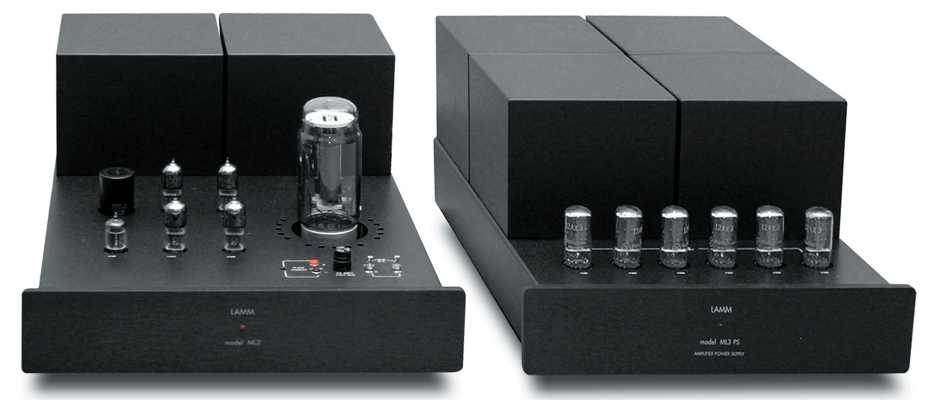
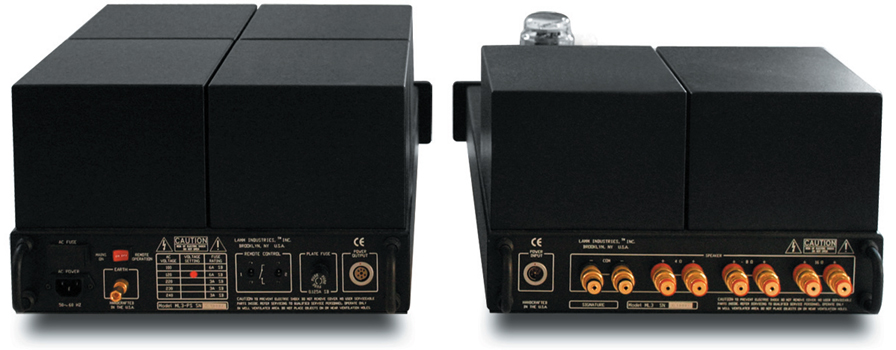
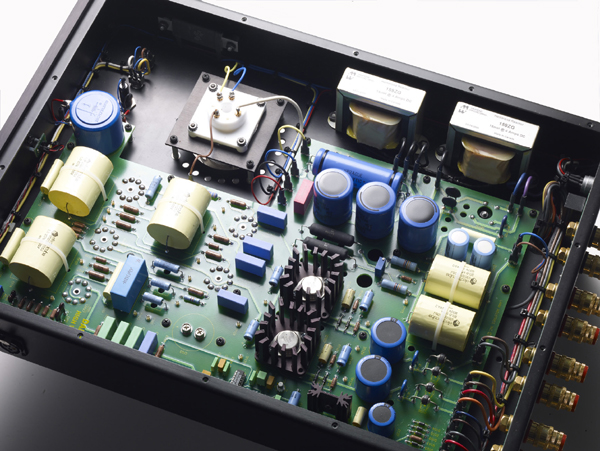
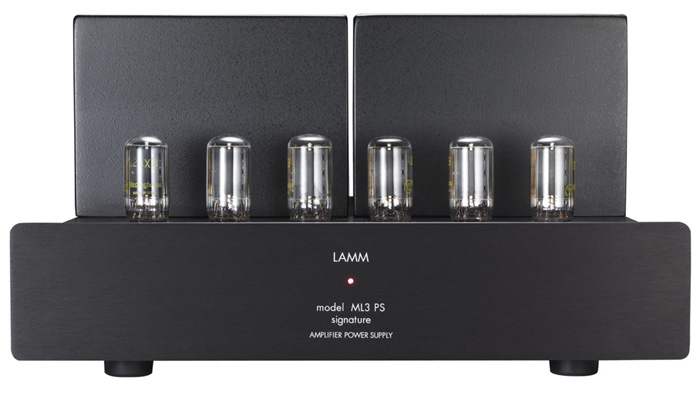
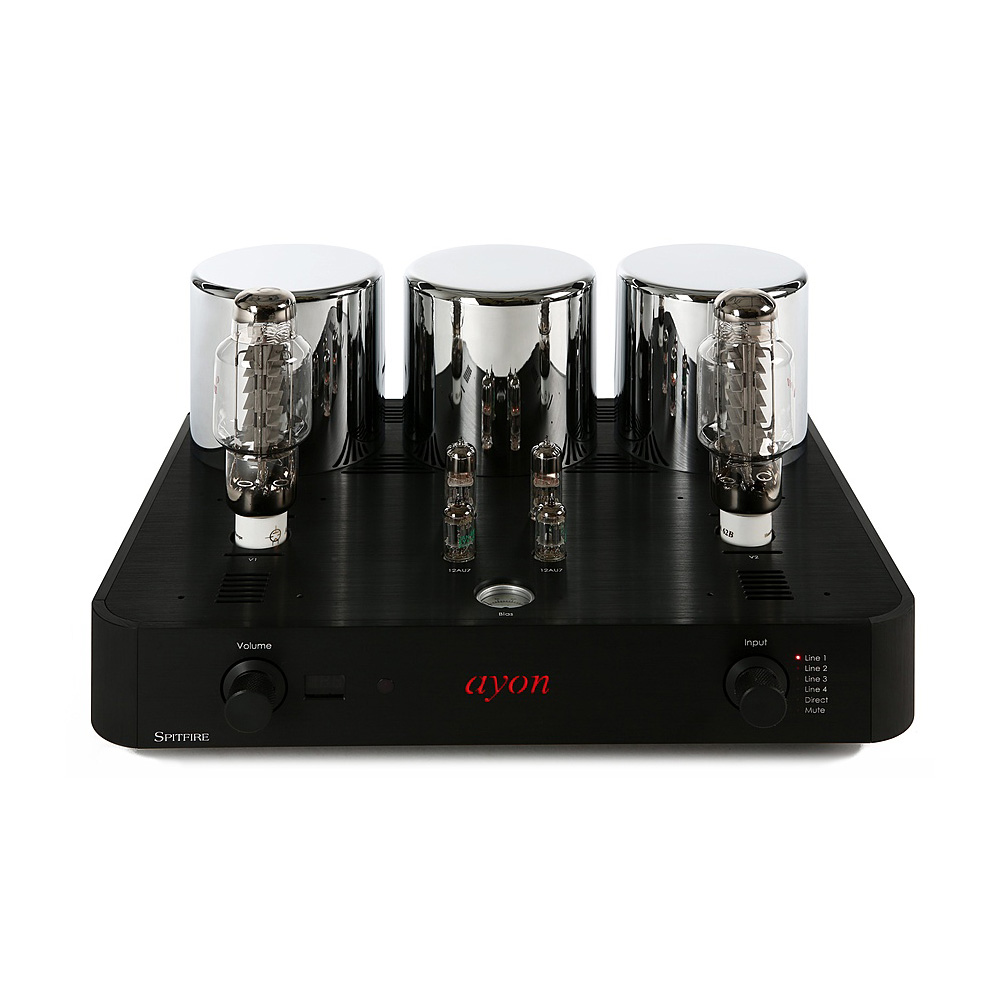
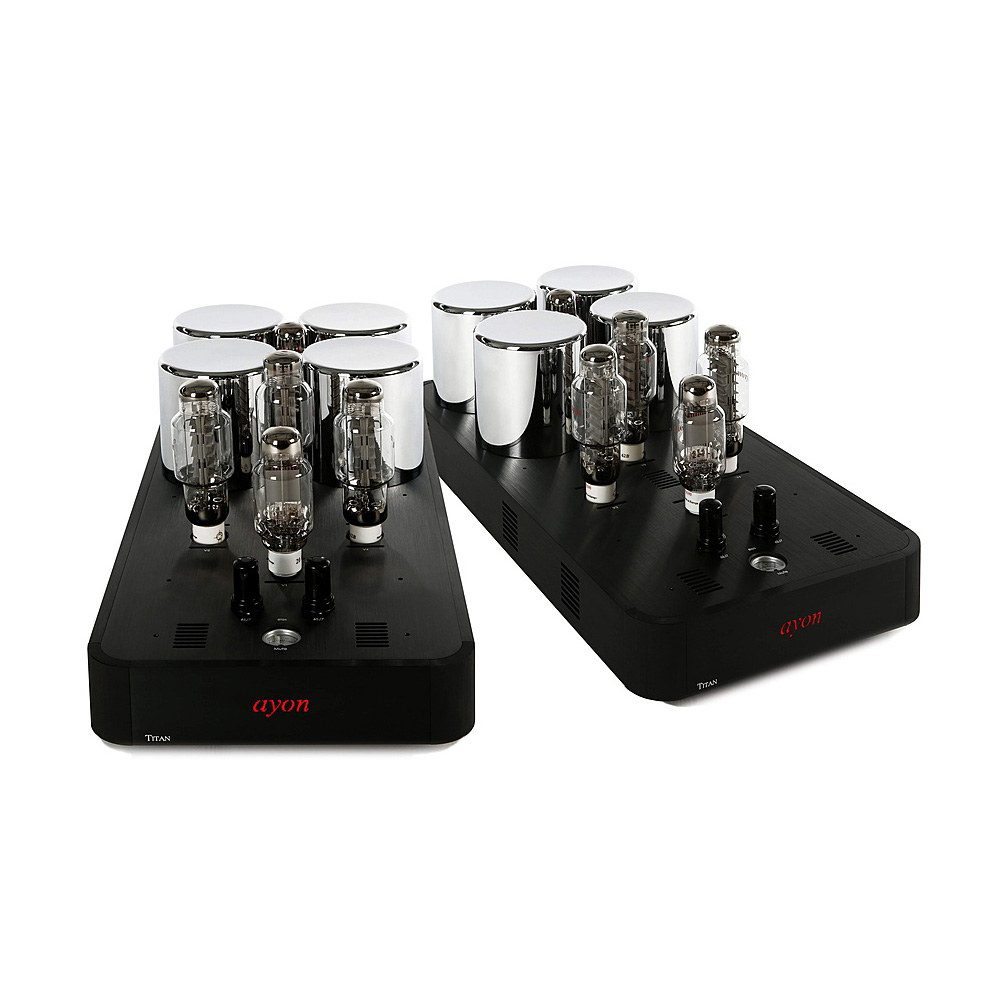
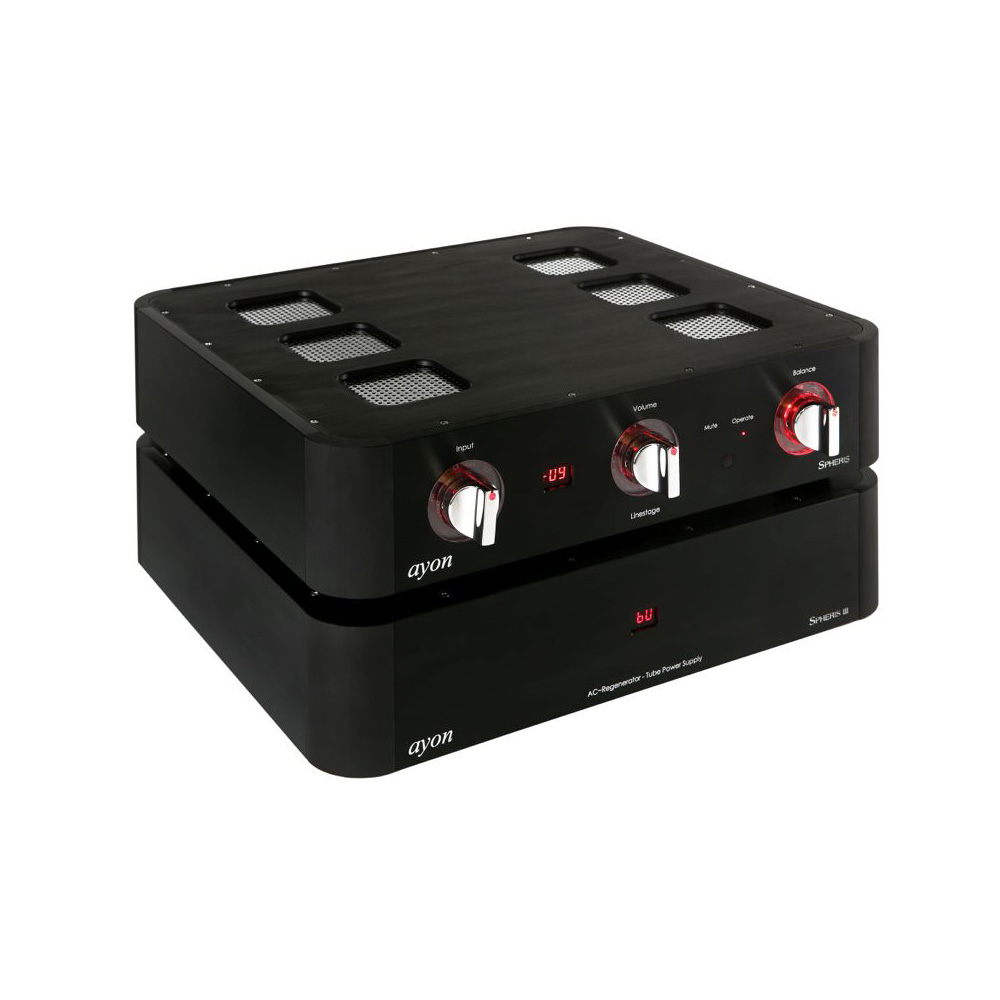
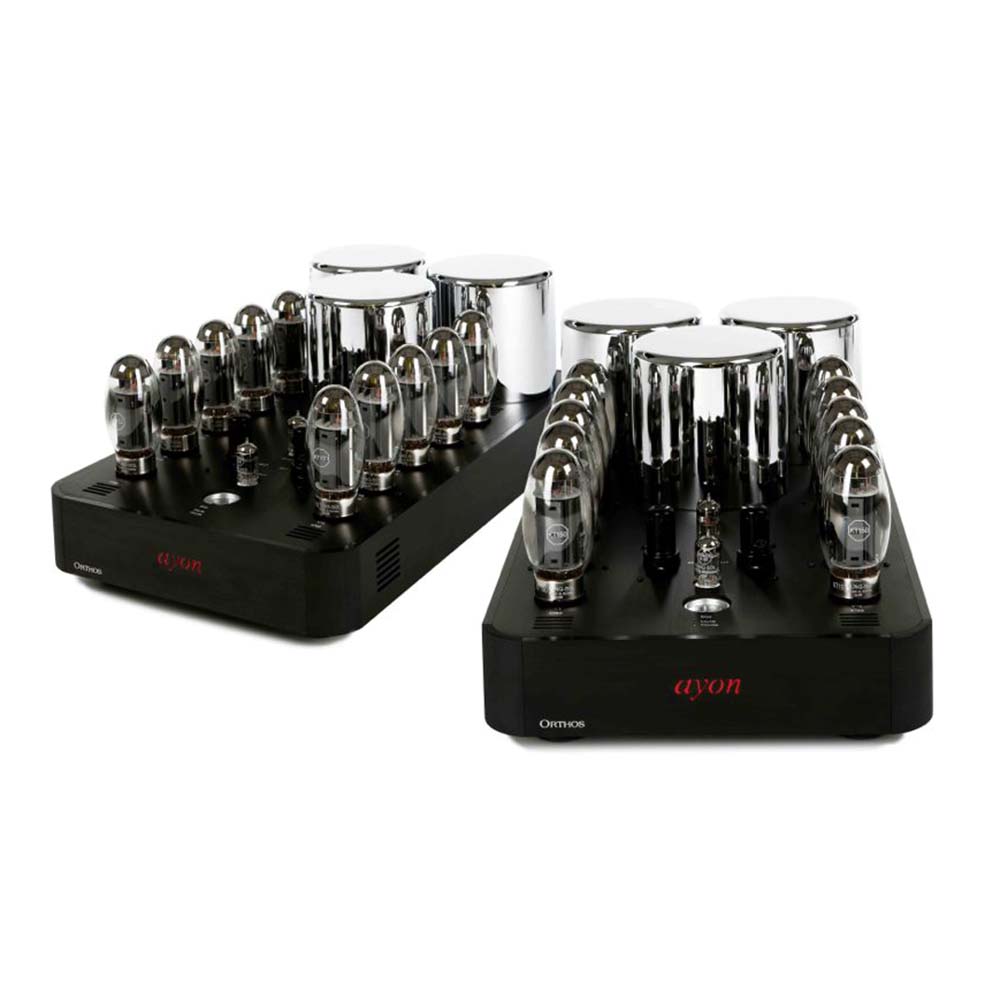
Reviews
There are no reviews yet.